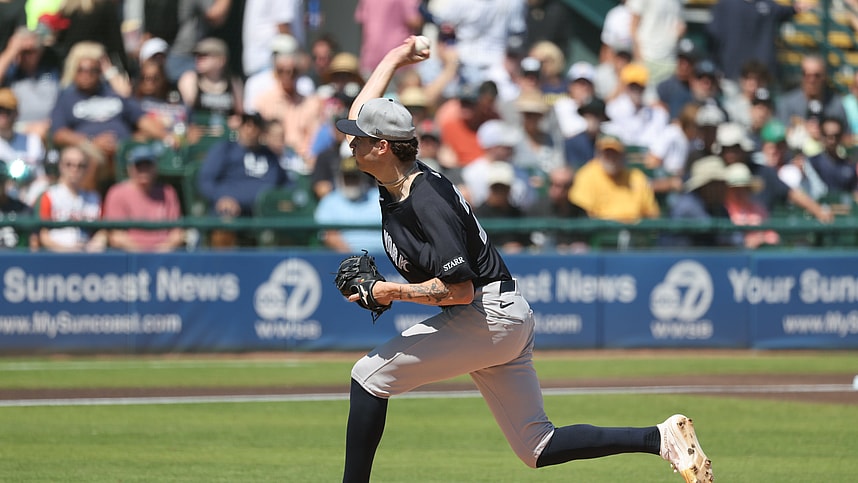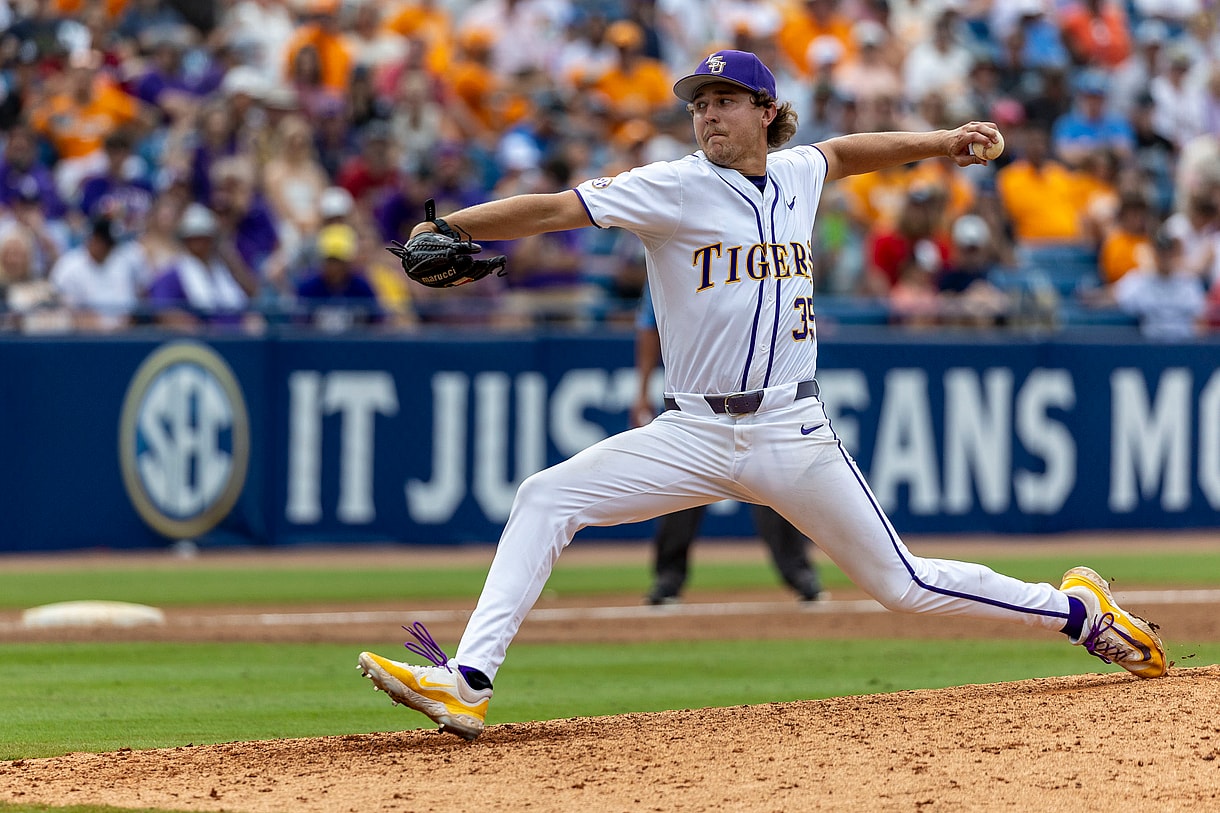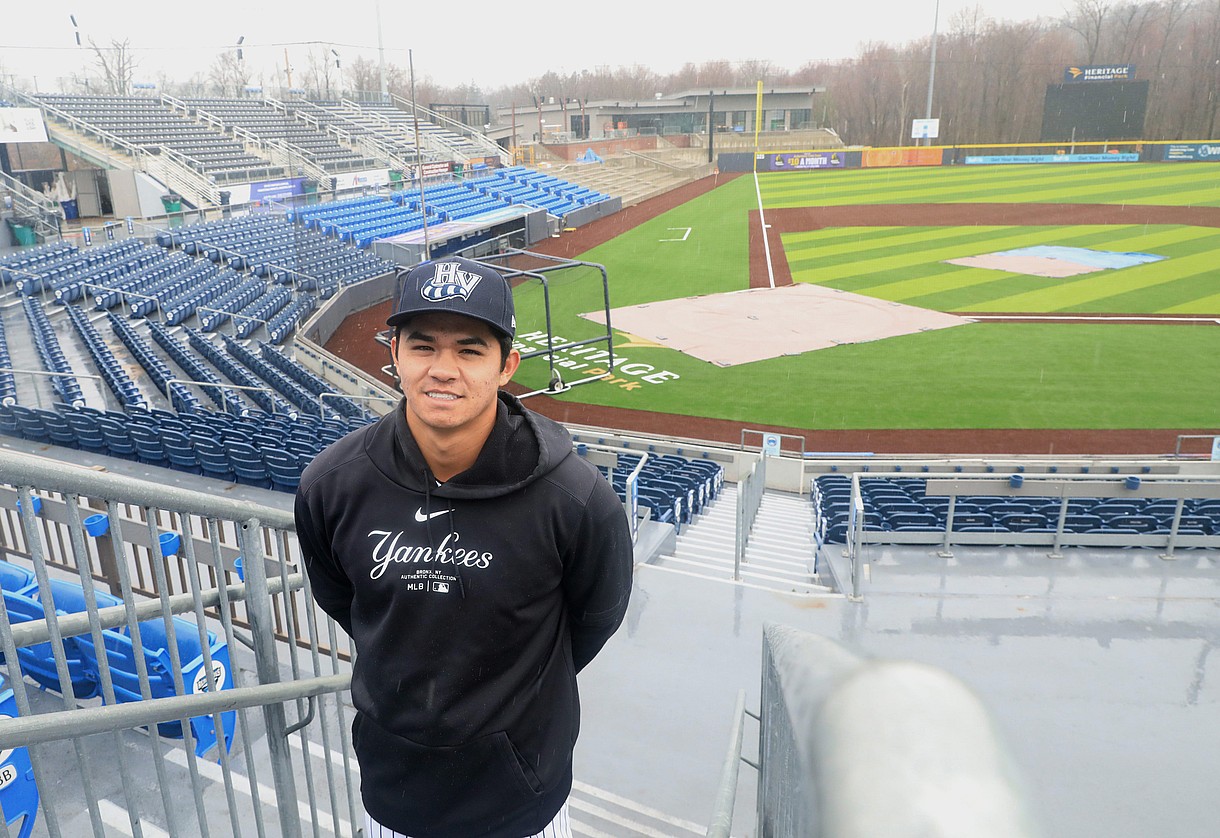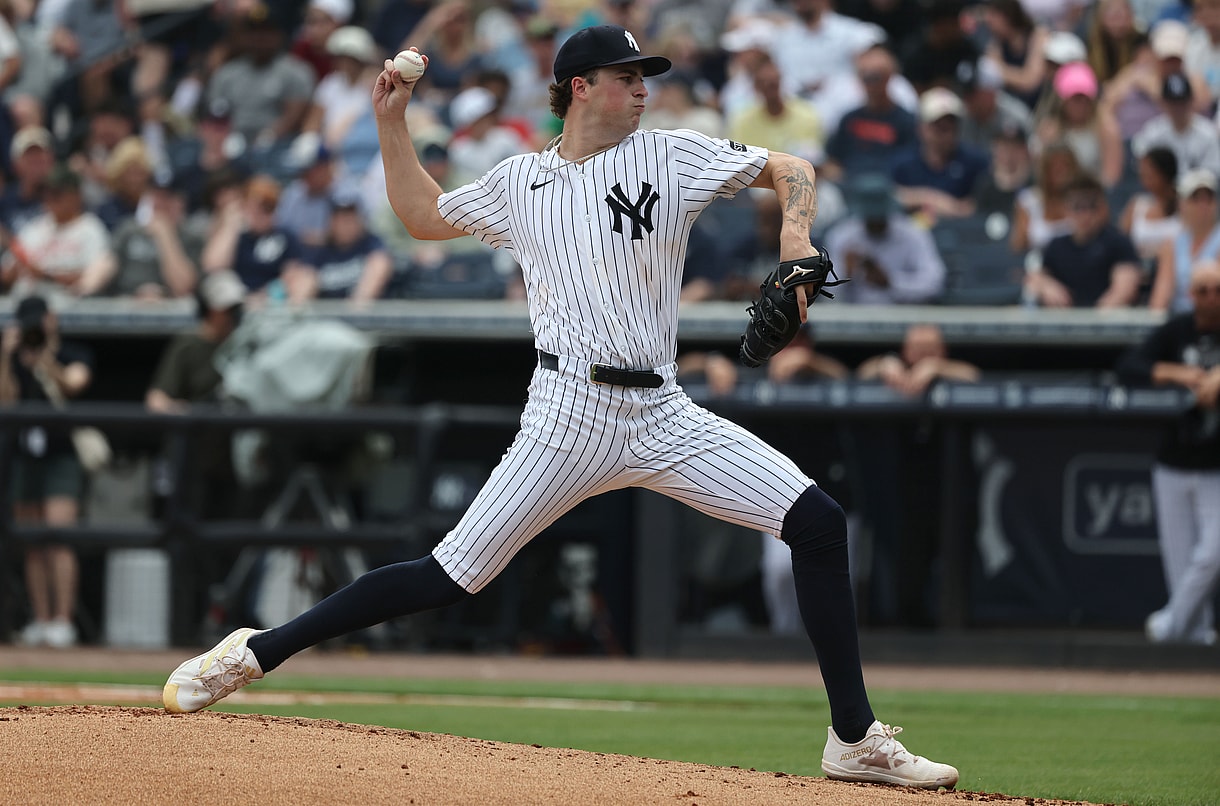
It was Opening Day for the Yankees‘ MiLB affiliates at Single-A, High-A, and Double-A as Tampa, Hudson Valley, and Somerset hosted their first games of the 2025 season. Each of their starters for the night is ranked in the organization’s top 30 prospects, and while one start shouldn’t define a prospect’s season, a good start can build momentum for these young arms. They’ve spent all offseason working towards having a big year, and seeing some of those improvements or adjustments immediately click can be the gratification they need to have confidence in their repertoire.
With Griffin Herring (A), Kyle Carr (A+), and Cam Schlittler (AA) taking the ball for their Opening Day matchups, they all showed why the Yankees have high hopes for their farm system in 2025, dazzling in their first starts with lots of punchouts and soft contact.
Griffing Herring Has Dominant Debut With Yankees’ Organization

Selected in the sixth round of the 2024 MLB Draft, Griffin Herring was a multi-inning reliever for the Tigers who featured a two-pitch mix. Fastballs between 90-92 MPH at the top of the zone with good carry and extension paired with a vicious slider that could rack up strikeouts. The Yankees wanted to stretch the left-hander out as a starting pitcher, something they wouldn’t be able to do without expanding Herring’s arsenal. Two-pitch starters aren’t a rarity in today’s game, it’s a dying breed even among the most elite fastball-slider guys in the league such as Spencer Strider.
The addition of a new changeup has made Herring’s arsenal even more complete, as he’s been able to rely on that pitch as a strikeout weapon against right-handed batters. He immediately found success with that new changeup, striking out seven of the 22 batters he faced across 5.2 innings of scoreless work. Griffin Herring allowed just four hits, no walks, and hit a batter during this scoreless performance, dominating Lakeland with relative ease in his first-ever pro outing. Still just 21 years old, the left-hander could grow into that 6’2 frame more and become a fast riser through the organization.
Griffin Herring is a strike-thrower who won’t have trouble staying ahead of hitters, but the ability to blow hitters away was always in question because of his fastball. Throwing 90-92 MPH is a disadvantage in today’s game, but the hope is that he can add a tick or two to his heater and let his other fastball traits do the rest of the work. Herring has plus extension on his four-seamer which gives it an extra MPH of perceived velocity, and in college it averaged between 17-18 inches of vertical ride.
I was encouraged to see 13 swings-and-misses to go with a 57.1% GB% in his first start, but even more impressed to see that with zero walks. You have to wonder whether a starter with a below-average fastball will have to sacrifice strikes or damage rates to keep hitters off-balance. Griffin Herring found a way to keep Lakeland from getting free passes or generating solid contact against him all night, and while he’s far from a finished project, the advanced feel for throwing strikes has me excited about how he’ll develop in the Yankees’ farm system.
Kyle Carr Keeps The Good Times Rolling, Grinds Through Solid Outing

The velocity readings at the Heritage Financial Park didn’t match the MiLB Complex readings of his fastball velocity returning to JUCO levels, but it didn’t stop Kyle Carr from performing well. The command wasn’t sharp, walking three of the 19 batters he faced (15.8%), but he struck out six and kept the ball on the ground a whopping 60% of the time. He picked up 14 swings and misses in just 4.2 innings of one-run ball, as the combination of a deep arsenal to go with his new sinker resulted in strikeouts and soft contact.
How his command progresses throughout the season does matter, but the ability to prevent damage contact while missing bats is still extremely desirable. Since the All-Star Break last year, Kyle Carr has been one of the top starters in the South Atlantic League and has yet to allow a home run. The Yankees need to figure out how to get Carr to live in the zone more often, but the traits of a solid backend starter are very much there. We are still early enough into the season where velocity and pitch count aren’t fully built up, and I am looking forward to how he looks in his second start.
If we can get 5-6 innings with a lower walk rate and a fastball sitting between 93-94 MPH, then the Kyle Carr train will start leaving the station. The upside here has always been high as a left-hander who had both a plus fastball and slider coming out of college, and the Yankees have further improved that arsenal with his cutter and sinker. The changeup is still a work-in-progress but if that’s ever an average pitch for him then we’re talking about a five-pitch starter who has good damage prevention traits and high whiff rates.
A short outing, high walk rate, and low fastball velocity keep me from giving Kyle Carr an A+ for this outing, but it is a good sign to see him continue to perform in Hudson Valley. Somerset isn’t too far away for Carr, but I’m sure the Yankees would like to see that fastball velocity return for good before they trust him to have success in Double-A, where he’ll pitch in a loaded Eastern League.
READ MORE: The Yankees have struck gold with a surprising new leadoff hitter
Yankees’ 2024 MiLB Pitcher of the Year Tosses Gem in First Start

On this day a year ago, Cam Schlittler wasn’t someone that anyone cared to keep tabs on outside of those inside the Yankees’ organization or with close connections. The right-hander had a 3.36 ERA with 154 strikeouts across 120.2 innings last year, and he started 2025 on a strong note as he tossed 5.2 innings of one-run baseball. He punched out seven batters and walked two, with his lone blemish coming off of a solo blast early in the game. Schlittler racked up 14 swings and misses, as his fastball was working at the top of the zone and his breaking ball looked as sharp as ever.
The improvements to his fastball shape were observed in Spring Training, as he averaged around 16 inches of IVB whereas before he was closer to the 14-15 inch range in that regard. It’s still not what I would consider to be a plus pitch, but the feel for his secondaries allowed him to use this heater in the right spots rather than lean on it to throw strikes and avoid walking the ballpark. When Cam Schlittler’s command is on he’s great, but as a taller pitcher, it’s going to be harder for him to keep those mechanics in sync at all times.
The stadium gun in Hartford had Schlittler reaching 96 MPH and touching 95 MPH multiple times, and if he’s able to continue putting together these kinds of performances, the Yankees might call him up this season. Their depth in the rotation is already running on fumes with Carlos Carrasco being brought in as an eighth or ninth starter but being pushed into the rotation due to the slew of injuries they endured in camp. Schlittler’s progression through the farm system could give them a secret weapon in the second half capable of putting together some strong starts if needed.
As of right now, there is still a lot of work to be done before Cam Schlittler can be trusted to deliver competitive big-league starts, especially with his command. He mentioned the addition of a splitter during camp, but we rarely saw his changeup during Spring Training, which is a sign that he didn’t really like the pitch or didn’t have much of a feel for it at the moment. His breaking balls play better against righties and his four-seamer isn’t much of a whiff pitch, so the need for an offspeed pitch is very real and could be the difference between reliever and middle-of-the-rotation starter.
Do not doubt his ability to make improvements; Cam Schlittler was drafted in the seventh round of the 2022 MLB Draft and was a tall right-hander with clunky mechanics and a 90 MPH fastball. Now he sits 94-95 MPH with two plus breaking balls, a solid cutter, and a splitter that can hopefully become a ~10% usage pitch for him in 2025. You’re beyond delighted with the backend starter outcome for any draft pick outside of the first round since that’s not their median outcome, but what keeps the Yankees entranced by Cam Schlittler is there’s a slim but non-zero chance he becomes a frontline guy.
More about: New York Yankees